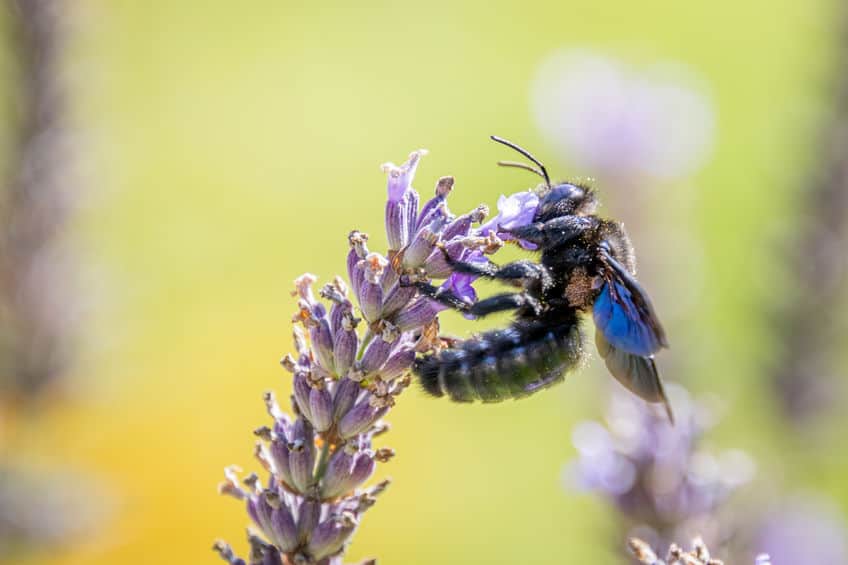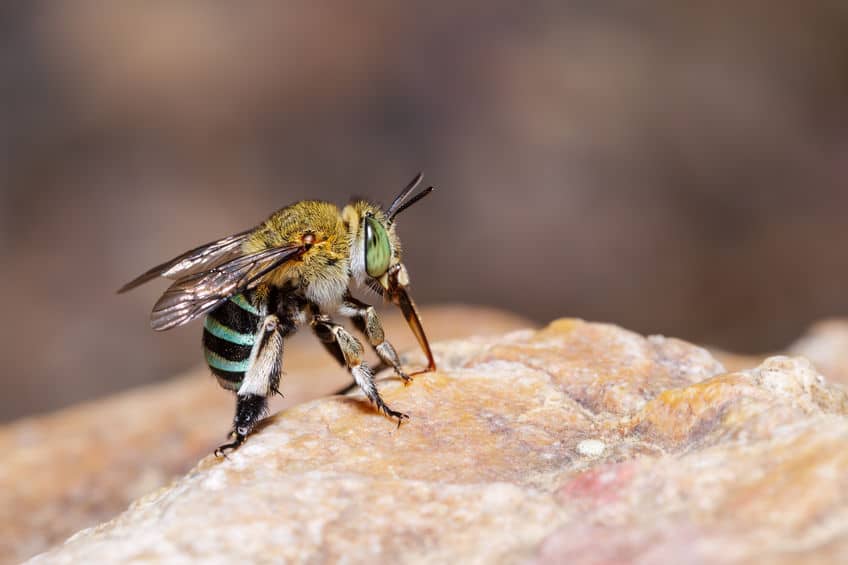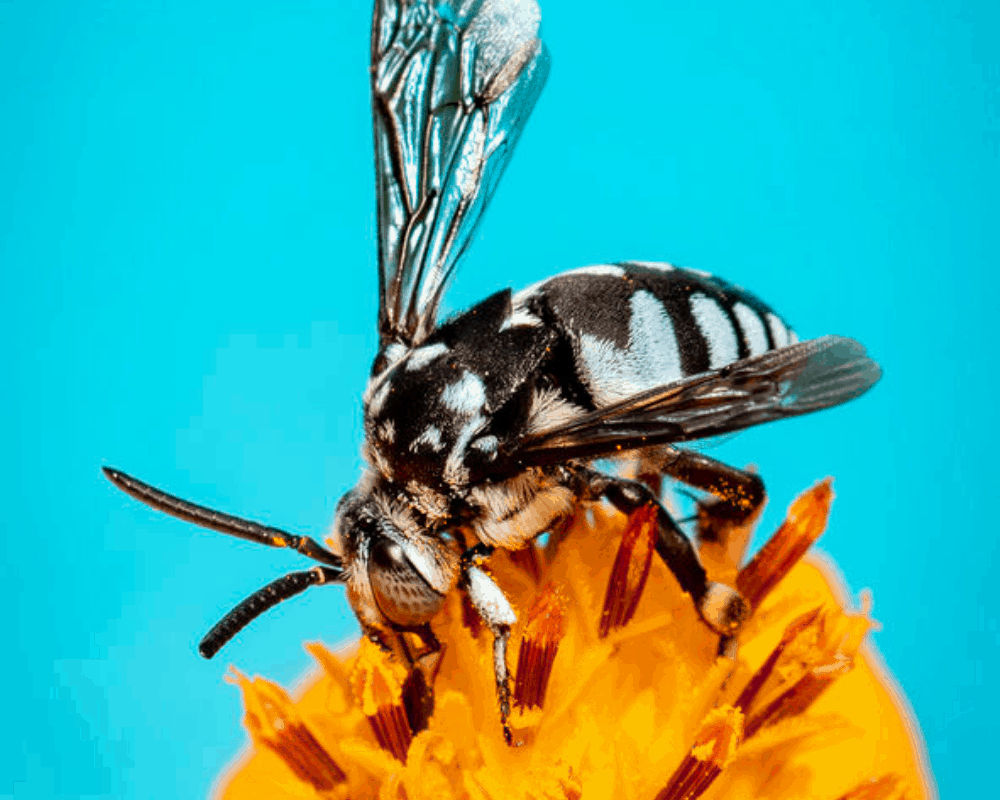The typical images of bees are the yellow and black stripes common on honey bees and bumblebees. They are the two most commonly used pollinators in agriculture, so their imagery stands out against all other bees.
You may have heard that solitary bees boast a range of incredible colours and appearances, but to hear that some species of bees are blue can be a surprise! Here are five species with this unique colouring:

Blue Carpenter Bee – Xylocopa caerulea
Known for their wood burrowing habit, carpenter bees are often viewed as a pest by many; their tunnels can be several meters in length! In an old log, this wouldn’t be an issue, but carpenter bees will make homes in any exposed, untreated wood that they deem fit. For buildings with exposed wooden beams, this presents an issue.
Despite their potential to be a nuisance, the blue carpenter bee is a wonder to behold. They have large, hairy bodies similar to that of a bumblebee, but differ in that most carpenter bee species have a shiny and hairless abdomen. The blue carpenter bee’s thorax is covered in thick, bright blue hairs, like a fashionable vest. The species name, X. caerulea even has its root word in “cerulean”. The wings of this bee are dark and metallic-looking, with glints of blues and purples.

Blue orchard mason bee – Osmia lignaria
Osmia species are all mason bees, and are crucial pollinators throughout the northern hemisphere. Often the first to emerge in spring, the bees cocoon in existing crevices or hollow reeds, with each cell blocked off by a mud partition, giving the bees their name. Once the adults emerge, they mate, the males die, and the females do the tireless work of collecting pollen, building nests, and laying eggs. Their method of pollination involves rubbing their abdomen against any and every flower in sight, which makes them incredibly good pollinators.
The blue orchard mason bee is most beneficial for orchards—as the name suggests—since their pollinating capabilities are far more effective than a honey bee; a single mason bee can do the work of 75 honey bees! The appearance of these bees isn’t as vibrant as the blue carpenter bee, but their exoskeleton still boasts a beautiful metallic shine that can range from a deep blue to a green tint.

Blue banded bee – Amegilla cingulata
Native to Australia, these bees are large, fuzzy pollinators with thick hairs covering their thorax and a shiny abdomen wrapped in stripes. The colours alternate between black and a very light blue, and the bee also has large, shiny green eyes. The number of stripes also indicates sex; females have four and males have five.
These bees are vital to Australian agriculture, as they are responsible for pollinating roughly 30% of the country’s crops. Similar to bumblebees, the blue banded bee uses “buzz pollination”, by grabbing on to flowers and emitting a high frequency that vibrates and dislodges pollen from the anthers of the bloom. Like most solitary bees, they fly close to home; travelling no further than 400 metres from the nest.

Blue calamintha bee – Osmia calaminthiae
Another mason bee species, the blue calamintha is very rare. Only found in one county in Florida, they are critically imperiled. The bee feeds off the Ashe’s calamint plant, contributing to its species name. This form of coevolution is common among solitary bee species, where at least 15% of species rely on specific plants to meet their nutritional needs. Often, the opposite is true as well, where a flower can only be pollinated by a small number of species.
The blue calamintha bee is covered in fine white hairs and has a shiny, dark blue body underneath.

Neon cuckoo bee – Thyreus nitidulus
Cuckoo bees get their name from the cuckoo bird, as they engage in similar behaviours. An Australian native bee, they are parasites to the blue banded bee. The female cuckoo bees will sneak into the nest and lay an egg in an empty brood chamber. The blue banded bee will not be able to tell the difference; she will rear it as her own, giving it a food store and sealing up the chamber for it to pupate.
The bee’s body is a vibrant blue and black, with a glossy exoskeleton that gives the bee its species name; nitidulus comes from nitidus, meaning “shining”. Their dark wings contribute to the bee’s striking appearance.

